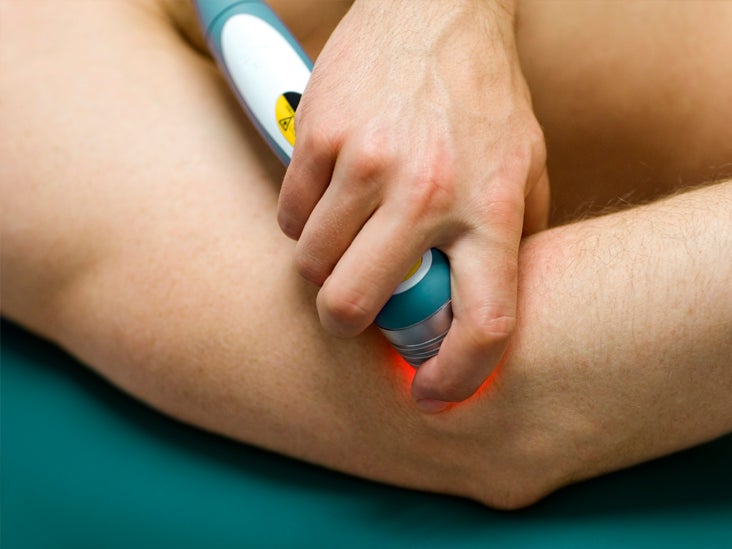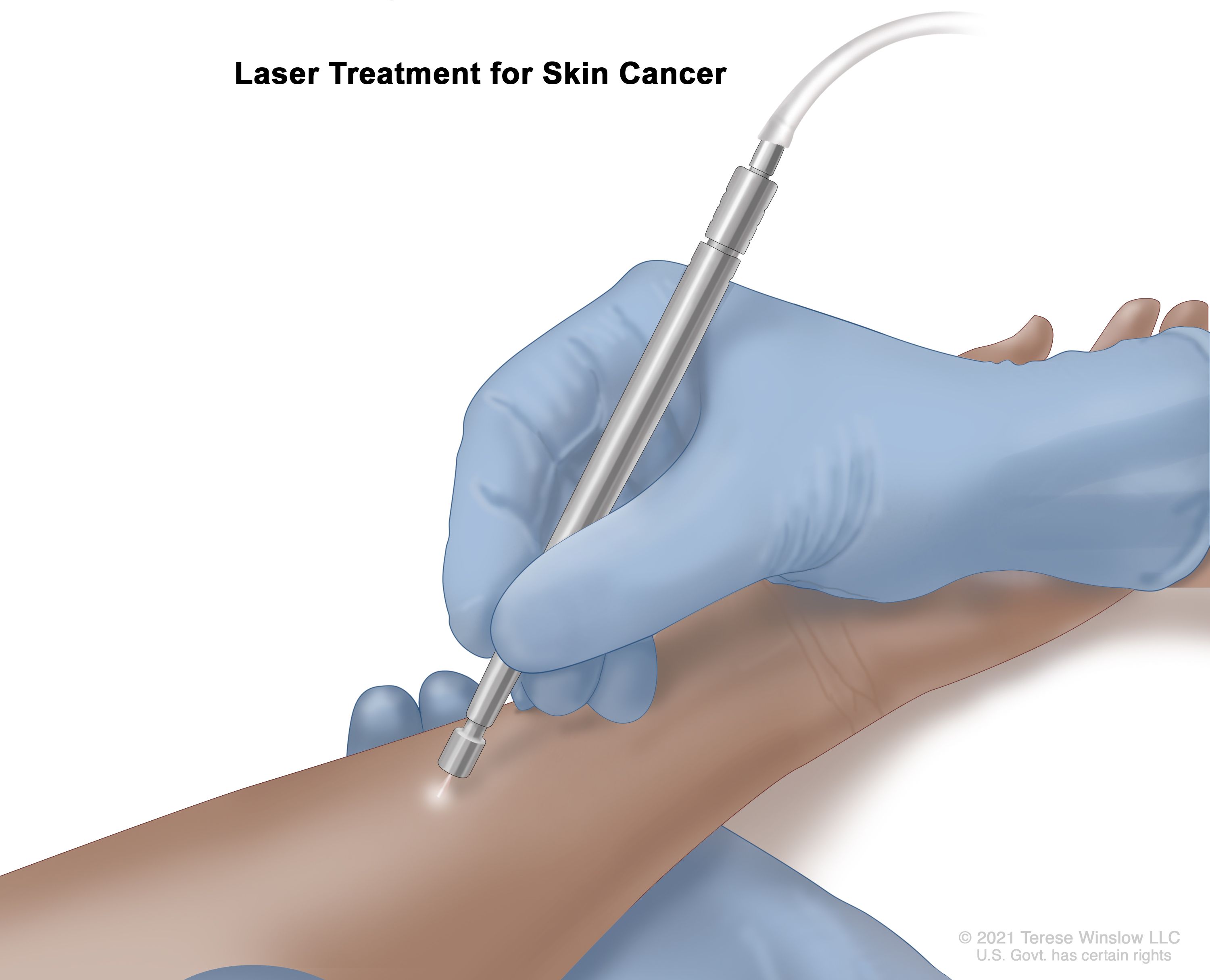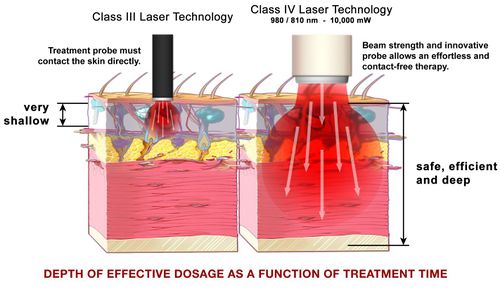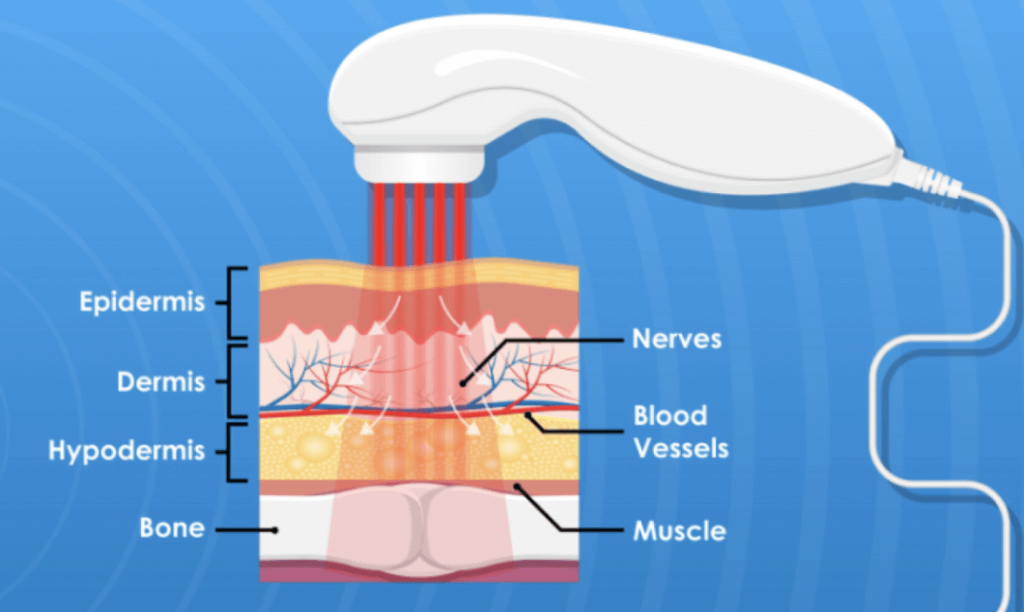class 4 laser therapy research
What Is K-Laser Class 4 Laser Therapy. Can Reduce Inflammation Aches and Pains.

Efficacy Of Non Ablative Laser Therapy For Lichen Sclerosus A Randomized Controlled Trial Journal Of Obstetrics And Gynaecology Canada
Chronic Low Back Pain.

. Higher wattage also results in faster treatment times and provides changes in pain complaints that are unachievable with low power lasers. So you definitely want to be properly prepared before you use them. Class 3R3B LLLT and CD and DVD writers.
Intended uses of Class IV laser devices include. Lets overview the main characteristics of the class 4 lasers and their safety requirements. It is the high power during each pulse that drives the photons or light energy to the target tissue up to 10-13 cm or 4 -5 inches deep.
Reduced pain and increased joint mobility following 10 laser treatements. Three treatments laser or placebo were administered within a 4-day perioperative period. The same holds for the excimer XeCl wavelength 308 nm laser which is also absorbed in the epidermis.
Do not stare at the laser dot when it is close to you. Class IV lasers commonly use the 980nm wavelength. Treatment effective in 71 of cases.
Today system are available that will deliver up to 60000mW of continuous output. The photobiomodulation in this study was delivered using a K-1200 class 4 therapy laser from K-Laser USA. What does research tell us about potential Class IV laser therapy benefits.
The major advantage of Class IV laser therapy over LLLT is its high. When many of the first research papers were published the most power laser available for therapy were less than 100mW and many systems had to be pulsed to keep the laser from burning out too quickly. By maximizing the primary effects Class IV therapy lasers are able to induce extremely rapid clinical responses.
Class 4 Surgical laser. We are thrilled to be among only a handful of clinics in the entire state of Oklahoma to offer laser therapy to our patients in Tulsa. Class IV Laser Studies.
5 This higher power becomes important when treating injuries to deeper tissues such as. Watt level high intensity laser Class 4 laser begin to emerge in the basic research and later in clinical rehabilitation practise. The K-Laser stimulates the bodys own natural reparative processes by delivering light in certain wavelengths that penetrate through the skin deep into soft tissues joints and bones stimulating healing factors.
The potential for a rapidly administered safe and effective treatment warrants further investigation. Dogs in the LG group received laser at wavelengths 660 nm red 100 mW and at 800 905 and 970 nm infrared maximum 15 W continuous wave 20 W peak pulsed wave. The purpose of this research article was to present a summary of the possible pain management benefits of LLLT.
PG n 13. The development of Class IV therapy lasers represents the next generation of light therapy. Accu IV Laser Therapy is the production of a high power level of impulses of light at a billionth of a second.
The classifications categorize lasers according to their ability to produce damage in exposed people from class I no hazard during normal use to class IV severe hazard for eyes and skin. Class IV therapy lasers provide more energy to deep structures in less time. Thus primarily in the epidermis.
Progressive health care providers wanting to offer the latest technology to their clientele should investigate Class IV therapy lasers. These findings suggest that laser therapy using the 10 W class IV instrument is efficacious for the long-term relief of the symptoms associated with chronic epicondylitis. A Class 4 laser can cause a significant eye injury if the beam whether direct or reflected enters the eye.
4 rows On the other hand class IV laser therapy devices do have a significant thermal effect in. Why The Accu IV Class IV Laser Is the Best Laser on the Market. More than 1200 studies conducted over 40 years worldwide have shown the powerful therapeutic benefits of high powered class IV laser therapy.
Even staring at the diffuse reflection of a laser dot on a wall or other surface may cause an eye injury within a few feet of the dot. Lasers that fall under the class 4 category are among the most dangerous. 5 Class 4 lasers can emit greater photonic energy in a shorter period of time than class 3B lasers without producing an appreciable rise in tissue temperature under normal treatment protocols.
The technology enables to generate intensity commonly around 10W and more for the purpose of producing stronger bio-modulation and analgesic effect. Recent trends in laser therapy show a preference for class 4 lasers in patient care settings. Click Here to Read Class IV Laser Studies.
A fourth treatment was recommended and was accepted in 284 of cases LG n 14. This is evidenced by. Laser therapy is cutting edge FDA approved technology for stopping pain reducing inflammation and accelerated healing of joints tissues and nerves.
Class 22M laser pointer. At 970 and 980 nm the depth of penetration is less than 300 microns 001. This is the preferred option for rapid pain control with expensive class IV lasers.
Pain eliminated completely in 45. Have looked at the benefits of Class IV laser and its advantage over LLLT. The classes are I II IIa IIIa IIIb and IV.
Laser Therapy 1997 9 pp 5-6. A CO 2 laser wavelength 10600 nm for example is a common class 4 laser that is absorbed in the first 10 microns 00004 inches of tissue. Low back pain neck pain shoulder pain arthritis joint pain cartilage repair frozen shoulder soft tissue injuries.
In cold laser therapy coherent light of wavelength 600 to 1000 nm is applied to an area of concern with hope for photo-stimulating the tissues in a way that promotes and accelerates healing. This ultimately assists in providing an energy dose that results in positive reproducible outcomes. Some of the most popular applications for this type of laser treatment are.
Diminished more than 70 chronic pain more than 60. LLLT is the application of light usually a low powered laser or LED typically power range of 10mW500mW. Among patients with CIPN PBM produced significant reduction in neuropathy symptoms.
According to Santamato et al Class IV laser therapy showed to significantly reduce subjects pain based on its analgesic anti-inflammatory anti-edematous properties 10. 980nm shares some therapeutic characteristics with 780nm to 850nm lasers however the bulk of the energy goes to creating thermal gradients in the H 2 O that increase circulation and blood flow. The full study can be accessed through Gynecologic Oncology online.
They can burn your skin and cause severe permanent damages to your eyes. Most result noticed after 5 treatments. Promoting relaxation of muscles and providing relief from muscle spasms.

Therapeutic Laser For The Treatment Of Chronic Low Back Pain

Non Ablative Er Yag Laser Therapy Effect On Stress Urinary Incontinence Related To Quality Of Life And Sexual Function A Randomized Controlled Trial European Journal Of Obstetrics And Gynecology And Reproductive Biology

Therapeutic Laser For The Treatment Of Chronic Low Back Pain

Pin On Bye Bye Pain Mobile Lasers

Efficacy Of Low Level Laser Therapy In The Management Of Neck Pain A Systematic Review And Meta Analysis Of Randomised Placebo Or Active Treatment Controlled Trials The Lancet

Pin On Cold Laser Therapy Instrument For Clinic Doctor

Pin On Bye Bye Pain Mobile Lasers

Ask Dr Z Holistic Alternative Vertigo Help With Low Level Laser Therapy Lllt Low Level Laser Therapy Laser Therapy Cold Laser Therapy

The Difference Between Class Iii Class Iv Laser Therapy Systems Aspen Laser

Laser Therapy Purpose Procedure And Risks

Definition Of Laser Therapy Nci Dictionary Of Cancer Terms National Cancer Institute

High Power Laser Therapy Physiopedia

What Is Low Level Laser Therapy Lllt And Does It Work

Create A Modern Captivating Logo For The New Class Iv K Laser Therapy By Wolf34 Medical Logos Inspiration Medical Logo Design Laser Therapy

Nobleshape Laser Therapy Medical Aesthetic Cell Membrane

Pin By Karen Schouest On Healthcare Cold Laser Low Level Laser Therapy Laser Therapy

